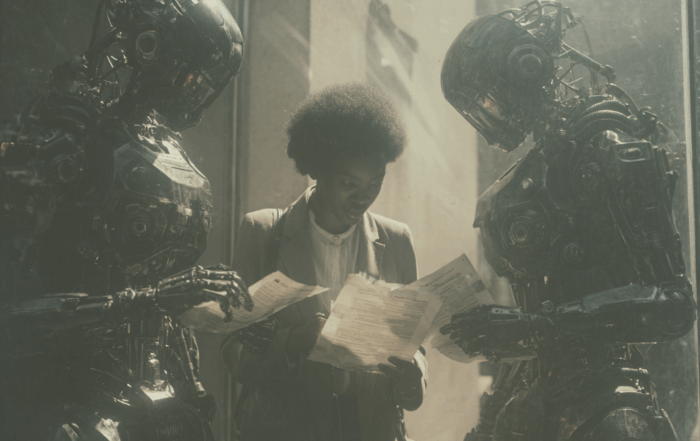Nothing stalls a team faster than when things go wrong and no one can agree on why. A deadline slips, a project derails, or a customer gets the wrong answer, and suddenly the hunt begins. People open different versions of the same document.
In Italy this is called “the hot jacked potato“, that thing nobody want in their hand.
The discussion stops being about fixing the problem. It becomes about defending which version of the truth is valid. Meetings spiral into blame. Trust between departments erodes. Instead of a unified team, you have silos protecting their own interpretations of reality.
The real damage isn’t just the mistake, it’s the culture that grows around it. When no one can trust the knowledge, accountability turns into finger-pointing. Teams become defensive. Decisions get slower, collaboration gets harder, and the organisation loses momentum.
I have witnessed entire projects, while critical for the company, being shelved because of this.
The Daily Pain of Scattered Knowledge
The truth is that in most enterprises, knowledge isn’t in one place, it’s everywhere. A project timeline gets updated in a chat channel, while the official version lives in a PM tool. A process lives in SharePoint, but the “real” way of doing it is written in a PowerPoint someone emailed around six months ago. Meanwhile, the person who actually designed that process remembers a detail differently, and now the team has three conflicting reference points.
This scatter means that every time you need an answer, you’re faced with friction. Do you search across systems? Ask a colleague? Spend an hour digging through files? By the time you find something that looks relevant, you’re still not confident it’s correct.
The result: knowledge isn’t empowering people, it’s slowing them down.
Duplicate Answers, Conflicting Realities
When there’s no single source of truth, duplication happens everywhere. Different teams create their own versions of policies, processes, and documents. What starts as small variations quickly becomes entire “realities” that diverge from each other.
For example:
-
Sales documents a new pricing model in their own files, but Finance has a slightly different structure for the same pricing.
-
Engineering records a product decision in Jira, while Product Management writes another version in Confluence.
-
HR announces a new policy by email, but the intranet still shows the old one.
All of these versions can appear “official” in their own context, but they cannot all be right. Employees start picking whichever one they personally trust, or whichever is easiest to find. Once that happens, truth stops being shared. It becomes fragmented, and collaboration erodes into silos of “our version” versus “their version.”
Time Lost Chasing Information
Without a trusted single source, employees spend a staggering amount of time chasing knowledge instead of using it. Studies consistently show that knowledge workers can lose 20–30% of their time every week just searching for and validating information.
Think about what this means in practice:
-
An engineer stops work to ping five colleagues to ask where the latest specification is.
-
A project manager compares two contradictory documents to guess which is correct.
-
A team repeats analysis that’s already been done, because they couldn’t find the original.
This constant hunting, clarifying, and redoing doesn’t just waste time. It drains energy, creates frustration, and damages trust in the systems that are supposed to help. Instead of building momentum, teams spin their wheels.
The Risk of Decisions Made on Bad Data
The most dangerous cost isn’t time wasted, it’s decisions made on bad data.
When leadership can’t trust a single source of truth, they gamble with every choice:
-
A compliance officer submits a report based on an outdated regulation.
-
A product manager greenlights development on the wrong set of requirements.
-
A customer service team gives three different answers to the same client question.
In each case, the company risks lost revenue, reputational damage, or regulatory penalties—not because employees don’t care, but because they couldn’t be sure which knowledge was reliable.
In complex enterprises, even small inaccuracies can snowball into massive consequences.
Why a Single Source of Truth Matters
A single source of truth (SSOT) is more than a convenience, it’s a foundation for trust. It creates one place where everyone in the organisation can turn and know: “this is the answer.”
When knowledge flows into one authoritative structure, three things happen:
-
Clarity: Confusion disappears because only one version exists.
-
Alignment: Teams stop arguing over versions and start collaborating on execution.
-
Confidence: Leaders make decisions faster because they trust the knowledge behind them.
In other words, SSOT isn’t just about storing knowledge. It’s about ensuring that every action across the enterprise is grounded in the same, reliable understanding.
What “Single Source of Truth” Really Means in Knowledge Management
It’s tempting to think that SSOT means “put everything in one tool.” But in knowledge management, it’s deeper than that.
A true SSOT means:
-
One authoritative version of each piece of knowledge. Redundant, conflicting versions are eliminated.
-
Knowledge is traceable. You know who created it, who updated it, and how it has evolved.
-
Knowledge is connected. Processes, people, and decisions aren’t isolated documents, they’re linked together, so context is never lost.
-
Knowledge is reusable. Whether you’re in operations, sales, or compliance, you don’t reinvent. You adapt the same truth to your context.
Without these qualities, a central repository is just another silo.
Steps Enterprises Take Today (and Why They Fall Short)
Enterprises already recognise the problem, but their fixes usually fall short:
-
Document repositories centralise storage, but they don’t solve duplication or trust.
-
Search tools make finding faster, but they can’t tell you which version is the correct one.
-
Wikis promise shared knowledge, but without rigorous upkeep, they quickly become outdated.
These efforts treat symptoms but not causes. The root issue isn’t lack of access, it’s lack of certainty. Without certainty, employees still waste time and leaders still risk bad decisions.
How Phlow Turns Tacit and Scattered Knowledge Into a Trusted Core
Phlow doesn’t just centralise knowledge. It redefines how enterprises create a single source of truth.
Instead of leaving information trapped in documents or in people’s heads, Phlow transforms it into a knowledge graph. That graph makes sure:
-
Every concept exists once and only once.
-
Each piece of knowledge is dynamically linked to the processes, documents, and people behind it.
-
Tacit knowledge, the unwritten context in people’s minds, is surfaced and made explicit, so it isn’t lost when someone leaves.
-
When you ask a question, Phlow gives you not just the answer, but the trusted source and context behind it.
This is more than a repository. It’s a living structure of enterprise knowledge that updates, adapts, and always reflects the current truth.
The Payoff: Trust, Speed, and Reuse Across the Enterprise
With a single source of truth, enterprises stop wasting time and start building momentum.
-
Employees trust what they find. No more second-guessing or chasing colleagues.
-
Work is reused, not repeated. Lessons learned in one project fuel the next.
-
Decisions are made faster. Leaders move with confidence, knowing the knowledge behind their choices is reliable.
-
Customers see consistency. Whether they speak to sales, support, or operations, they get the same accurate answer.
The payoff isn’t just efficiency—it’s resilience. In a world where speed and accuracy define competitiveness, enterprises that unify their knowledge don’t just move faster. They move smarter, with less risk and more confidence in every decision.
More Articles
Where HR, R&D, and IT All Care About the Same Thing (But Don’t Know It)
At first glance, HR, R&D, and IT seem to live in entirely different worlds. One is about people, another about innovation, and the third about systems. Their KPIs, budgets, and daily challenges often don’t overlap. [...]
One system, one knowledge to connect them all
If you recognised the loose reference to the “Lord of the Rings”, it means you’re a little bit of a nerd like me. And yes, it’s now cool to be one, not like in the [...]
Human in the Loop: Safeguarding Knowledge in the Age of Algorithmic Echoes
Every industry is racing to prove its “AI-powered” credibility. Press releases repeat the same phrases: “intelligent,” “seamless,” “reduce burden.” The sameness isn’t accidental, it’s the result of algorithmically optimised language, a promotional echo chamber where [...]
When Knowledge Lives Everywhere, You Can’t Trust Anything: Why Enterprises Need a Single Source of Truth
Nothing stalls a team faster than when things go wrong and no one can agree on why. A deadline slips, a project derails, or a customer gets the wrong answer, and suddenly the hunt begins. [...]
When Knowledge Speaks a Different Language, and No One Understands
In global enterprises, knowledge should flow freely across offices, teams, and time zones. In reality, it rarely does. One of the most overlooked reasons? Language. When a company has locations in Tokyo, Milan, São Paulo, [...]
The Problem with Tribal Knowledge
Every single company lose it every day. Most don’t know what to do about it. And very few realise how much it costs them. I’m talking about tribal knowledge. What the Hell is Tribal Knowledge? [...]






